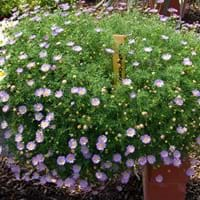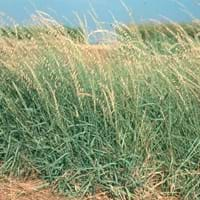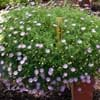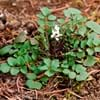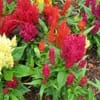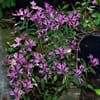Life Span
Annual
Perennial
Type
Tender Perennial
Grass
Origin
Hybrid origin, Australia, New Zealand
North America, United States, Western United States, Southwestern United States, Mexico
Types
Not Available
Grasses
Habitat
Dry areas, Islands, Semi arid regions, Tropical regions
Dry areas
USDA Hardiness Zone
10-12
3-9
Sunset Zone
H1, 14, 15, 16, 17, 18, 19, 20, 21, 22, 23, 24
1a, 1b, 2a, 2b, 3a, 3b, 7, 8, 9, 10, 11, 14, 18, 19, 20, 21
Habit
Cushion/Mound-forming
Clump-Forming
Flower Color
White
White hair and some brown spots on margins and at tips
Flower Color Modifier
Bicolor
Bicolor
Fruit Color
Not Available
Non Fruiting Plant
Leaf Color in Spring
Green
Green, Gray Green
Leaf Color in Summer
Green
Light Green
Leaf Color in Fall
Green
Purple, Gray Green
Leaf Color in Winter
Light Green
Tan
Leaf Shape
Club - shaped
Grass like
Plant Season
Spring, Summer, Fall, Winter
Summer, Fall, Winter
Sunlight
Full Sun, Partial Sun
Full Sun
Type of Soil
Loam, Sand
Clay, Loam, Sand
The pH of Soil
Acidic
Neutral, Alkaline
Soil Drainage
Well drained
Well drained
Bloom Time
Indeterminate
Summer, Late Summer
Tolerances
Drought
Pollution, Drought
Where to Plant?
Container, Ground, Pot
Ground
How to Plant?
Seedlings
Divison, Seedlings
Plant Maintenance
Medium
Medium
Watering Requirements
Average Water Needs
Medium
In Summer
Lots of watering
Lots of watering
In Spring
Moderate
Moderate
In Winter
Average Water
Average Water
Soil pH
Acidic
Neutral, Alkaline
Soil Type
Loam, Sand
Clay, Loam, Sand
Soil Drainage Capacity
Well drained
Well drained
Sun Exposure
Full Sun, Partial Sun
Full Sun
Pruning
Remove damaged leaves, Remove dead branches, Remove dead leaves
Remove damaged leaves, Remove dead branches, Remove dead leaves
Fertilizers
All-Purpose Liquid Fertilizer
All-Purpose Liquid Fertilizer
Pests and Diseases
Slugs, Snails
Beetles, Grasshoppers
Plant Tolerance
Drought
Drought
Flower Petal Number
Single
Single
Foliage Texture
Fine
Fine
Foliage Sheen
Glossy
Matte
Attracts
Not Available
Butterflies
Allergy
Not Available
Not Available
Aesthetic Uses
Beautification, Hanging Basket, Showy Purposes
Showy Purposes
Beauty Benefits
Not Available
Not Available
Environmental Uses
Air purification
Air purification, Erosion control
Medicinal Uses
No Medicinal Use
Cuts
Part of Plant Used
Flowers, Leaves
Leaves
Other Uses
Used as Ornamental plant
Used to feed livestock
Used As Indoor Plant
No
Sometimes
Used As Outdoor Plant
Yes
Yes
Garden Design
Bedding Plant, Container, Edging, Hanging Basket, Mixed Border, Rock Garden / Wall
Dried Flower/Everlasting, Lawns and Turf, Mixed Border, Rock Garden / Wall
Botanical Name
BRACHYSCOME iberidifolia
BOUTELOUA gracilis
Common Name
Brachycome iberidifolia, Swan River Daisy
Blue Grama Grass, Mosquito Grass
In Hindi
swan river daisy
Bouteloua gracilis
In German
Swan River Gänseblümchen
Bouteloua Gracilis
In French
Swan River daisy
Bouteloua aristidoides
In Spanish
Río Swan margarita
Chondrosum gracile
In Greek
Swan River μαργαρίτα
Bouteloua gracilis
In Portuguese
daisy Swan River
Bouteloua Gracilis
In Polish
Swan River stokrotka
Bouteloua Gracilis
In Latin
Swan flumen primula
Bouteloua Gracilis
Phylum
Tracheophyta
Magnoliophyta
Class
Magnoliopsida
Liliopsida
Order
Asterales
Cyperales
Family
Asteraceae
Poaceae
Genus
Brachyscome
Bouteloua
Clade
Angiosperms, Asterids, Eudicots
Angiosperms, Commelinids, Monocots
Tribe
Astereae
Cynodonteae
Subfamily
Asteroideae
Chloridoideae
Number of Species
Not Available
Properties of Swan River Daisy and Bouteloua Gracilis
Wondering what are the properties of Swan River Daisy and Bouteloua Gracilis? We provide you with everything About Swan River Daisy and Bouteloua Gracilis. Swan River Daisy doesn't have thorns and Bouteloua Gracilis doesn't have thorns. Also Swan River Daisy does not have fragrant flowers. Swan River Daisy has allergic reactions like Not Available and Bouteloua Gracilis has allergic reactions like Not Available. Compare all the properties and characteristics of these two plants. Find out which of these plant can be used as indoor plant. If you are interested to decorate your house and garden, find out aesthetic uses, compare them and select the plant which will beautify your surrounding. Along with beautification, try comparing medicinal and edible uses of Swan River Daisy and Bouteloua Gracilis and you can choose the plant having best and most benefits.
Season and Care of Swan River Daisy and Bouteloua Gracilis
Season and care of Swan River Daisy and Bouteloua Gracilis is important to know. While considering everything about Swan River Daisy and Bouteloua Gracilis Care, growing season is an essential factor. Swan River Daisy season is Spring, Summer, Fall and Winter and Bouteloua Gracilis season is Spring, Summer, Fall and Winter. The type of soil for Swan River Daisy is Loam, Sand and for Bouteloua Gracilis is Clay, Loam, Sand while the PH of soil for Swan River Daisy is Acidic and for Bouteloua Gracilis is Neutral, Alkaline.
Swan River Daisy and Bouteloua Gracilis Physical Information
Swan River Daisy and Bouteloua Gracilis physical information is very important for comparison. Swan River Daisy height is 20.30 cm and width 30.50 cm whereas Bouteloua Gracilis height is 45.70 cm and width 25.40 cm. The color specification of Swan River Daisy and Bouteloua Gracilis are as follows:
Swan River Daisy flower color: White
Swan River Daisy leaf color: Green
Bouteloua Gracilis flower color: White hair and some brown spots on margins and at tips
- Bouteloua Gracilis leaf color: Green and Gray Green
Care of Swan River Daisy and Bouteloua Gracilis
Care of Swan River Daisy and Bouteloua Gracilis include pruning, fertilizers, watering etc. Swan River Daisy pruning is done Remove damaged leaves, Remove dead branches and Remove dead leaves and Bouteloua Gracilis pruning is done Remove damaged leaves, Remove dead branches and Remove dead leaves. In summer Swan River Daisy needs Lots of watering and in winter, it needs Average Water. Whereas, in summer Bouteloua Gracilis needs Lots of watering and in winter, it needs Average Water.
